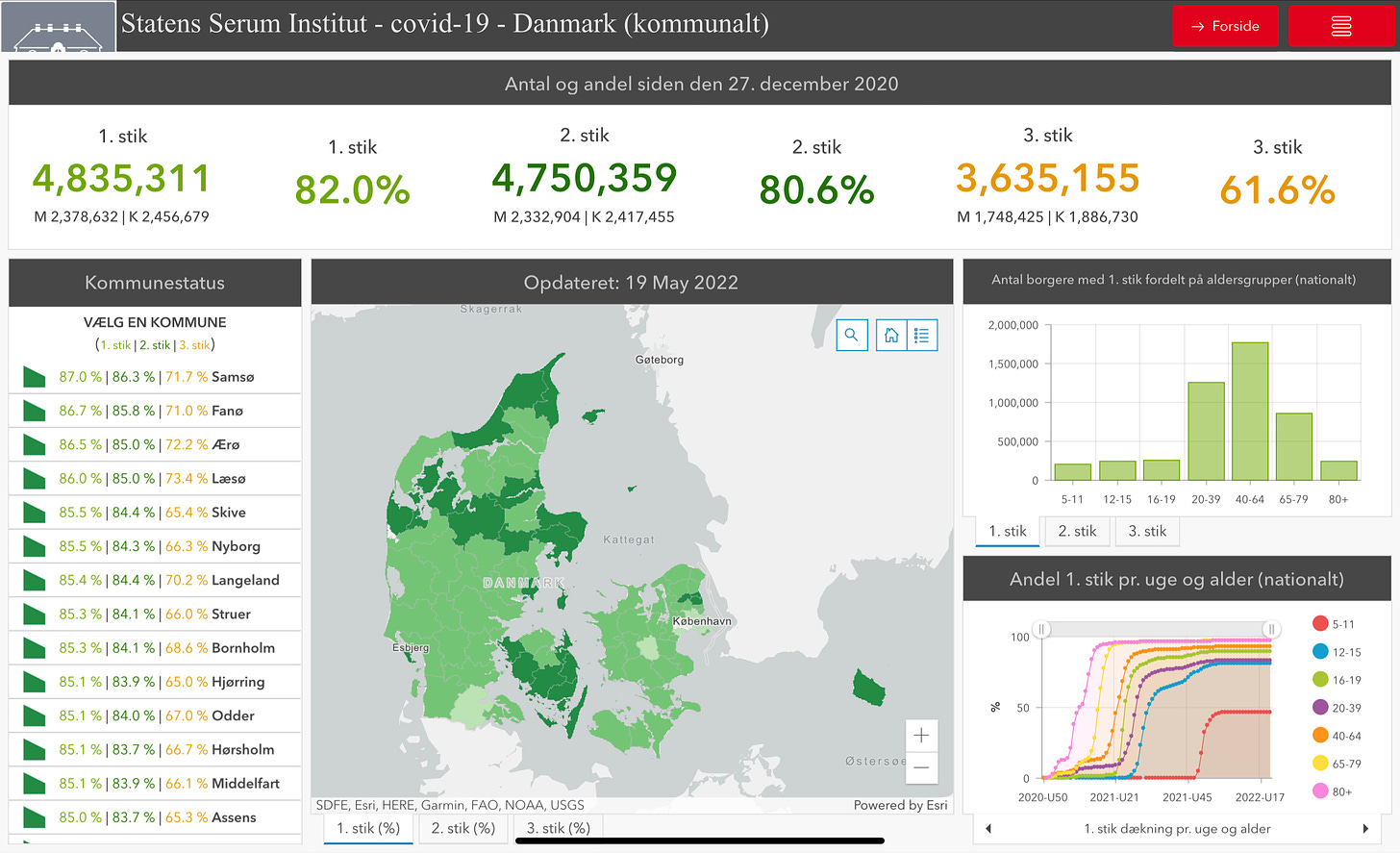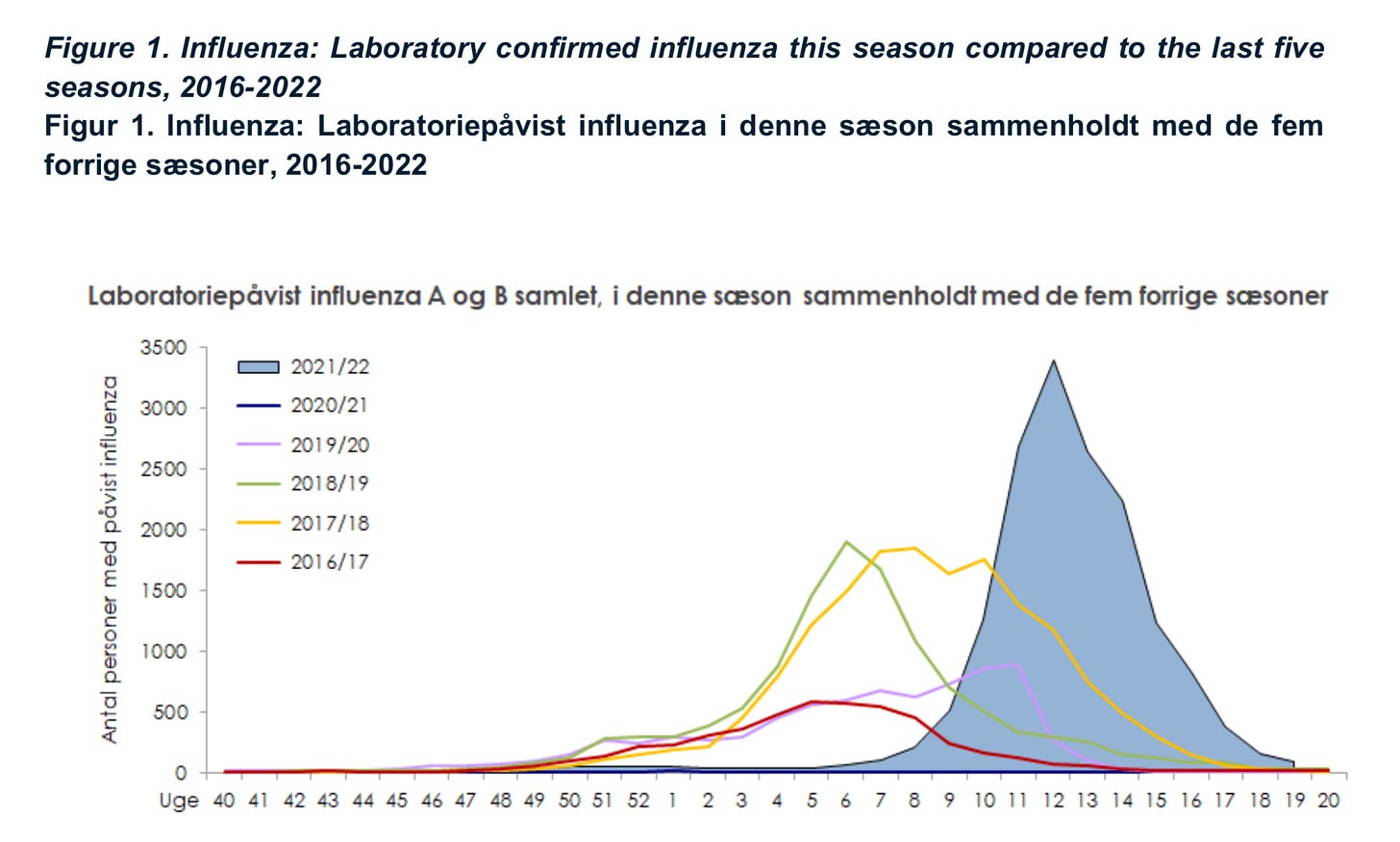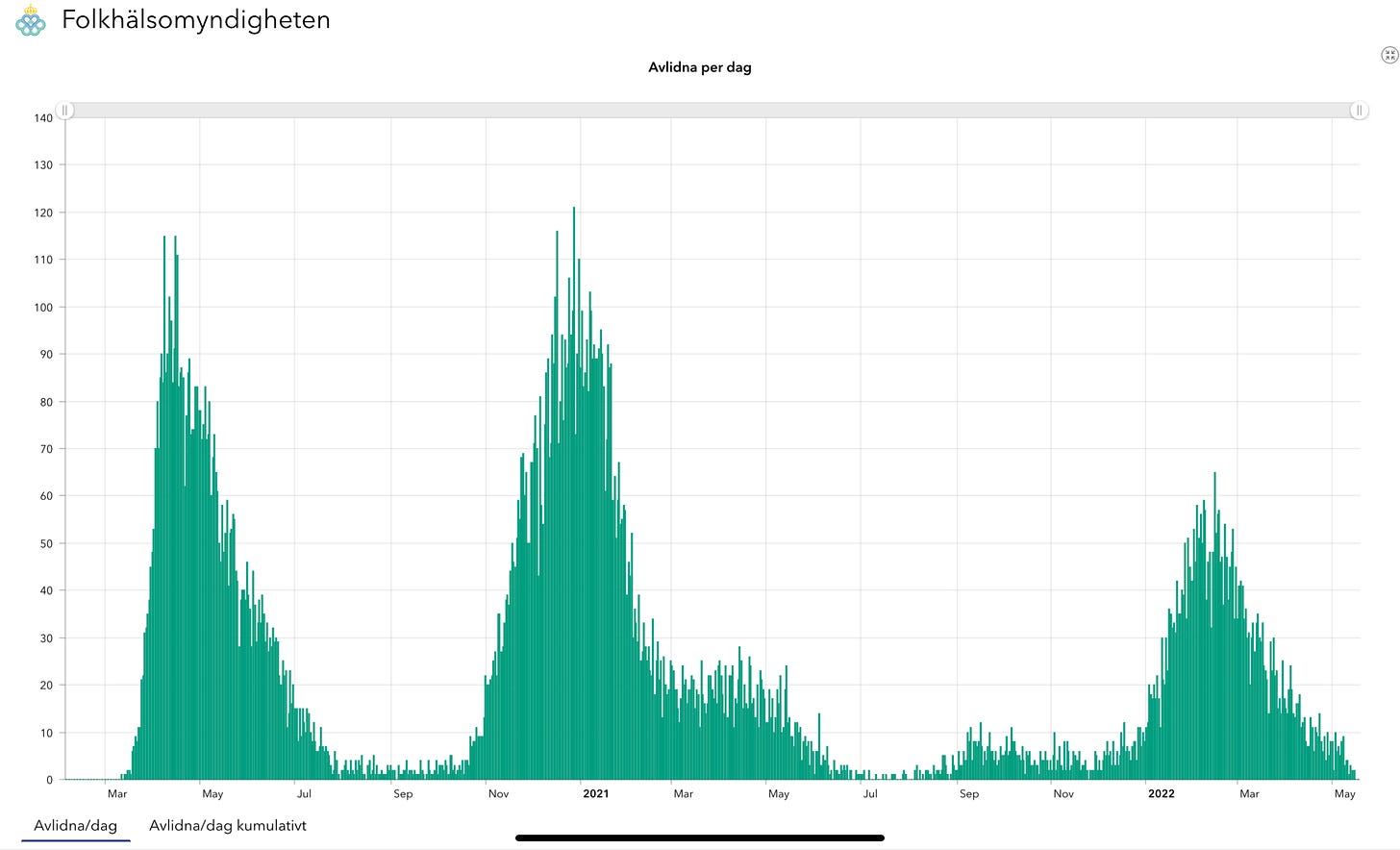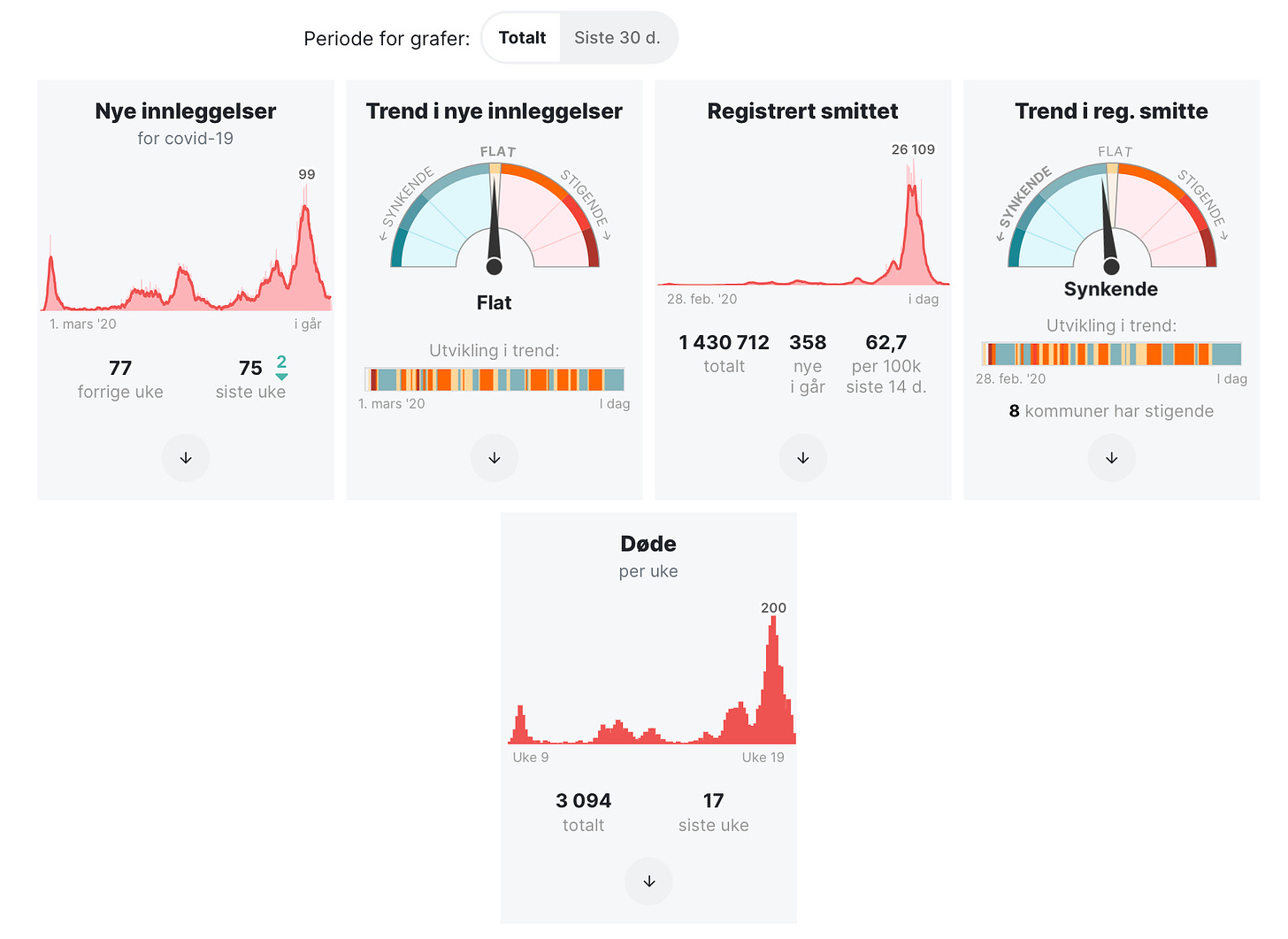🚨 Health alert 🚨
Cases of monkeypox are popping up around the globe including the first ever cases of community transmission within Europe. So far, there have been confirmed cases in the United States, Canada, United Kingdom, Spain, and Portugal.
In Europe, the European Centre for Disease Prevention and Control is now sounding a warning. The ECDC says the first case was reported by the UK Health Security Agency on May 7, and since then it has reported at least six more cases. All of those infected in the UK are men, none have a recent travel history, and of the three infection clusters there is no common point of contact. In the last four years the UK has only recorded seven other monkeypox cases and all of them were linked to travel to West and South Africa. This marks the first time that infections have been reported in Europe without a travel-related epidemiological link.
Europe’s health agency says Portugal has confirmed five monkeypox cases and has another 20 suspected infections. Spain is reporting eight suspected infections. In all cases in Spain and Portugal, those infected were young men.
According to the ECDC, monkeypox is a viral disease spread through close contact with an infected person or animal. Typically, it is spread by respiratory droplets due to prolonged face-to-face contact. Symptoms include fever, headache, muscle aches, backache, swollen lymph nodes, chills, and exhaustion. This is followed by a rash that begins on an infected person’s face then spreads across their body. The rash will eventually form a scab and then after a while fall off. Once the scab falls off, the infected person is no longer contagious.
“The clinical manifestation of monkeypox is usually mild. The West African clade, which has so far been detected in cases reported in Europe, has been observed to have a case fatality rate of 3.6% in studies conducted in African countries. Mortality is higher among children and young adults, and immunocompromised individuals are especially at risk for severe disease. Most people recover within weeks.”
The agency suspects the virus is likely spreading between sexual partners due to close contact with infectious skin lesions. It says with cases popping up around the globe with no travel history, the “likelihood of further spread of the virus through close contact, for example during sexual activities, is considered to be high.”
“Those individuals engaging with multiple sexual partners or having casual sex should be particularly vigilant. Suspected cases should be isolated and tested.”
The ECDC says it is monitoring the situation closely and emphasizes that without close contact the chances of being infected are “considered to be low.”
🇸🇪
The Swedish Public Health Agency has confirmed a single case of monkeypox. It says a person in the Stockholm region has been confirmed to have the viral infection that has broken out globally. The agency is now investigating to see if there are other cases out there.
Infection Doctor and Investigator Klara Sondén:
“The person in Sweden who has been confirmed to be infected with the virus is not seriously ill, but has received care. We do not yet know where the person became infected. An investigation is ongoing right now.”
The agency has reported the case to the World Health Organization and the European Centre for Disease Prevention and Control. It has also requested that the Swedish government classify monkeypox as a “generally dangerous disease.” This will allow it to take infection control measures and access other tools under the Infection Control Act.
🇳🇱
Dutch virologist Marion Koopmans, who helped advise the World Health Organization on the COVID pandemic, says the monkeypox outbreak is "very unusual" and worrisome. She says “monkeypox as we know it is not that contagious.”
🇨🇦
Health officials in Montreal announced on Thursday afternoon they are investigating 17 suspected monkeypox cases.
🇺🇦/ 🇷🇺 War
🇫🇮/ 🇸🇪
As expected Finland and Sweden officially submitted their applications simultaneously to join NATO on Wednesday.
But there are already bumps forming in the road. Turkey is looking to leverage the situation to gain concessions from the West. Turkish President Recep Tayyip Erdogan is threatening to veto Finland and Sweden’s NATO bid as he accuses the two countries of harboring “terrorists.” Specifically, members of the separatist militant PKK, or Kurdistan's Workers Party.
There are also reports that Croatia may not support the two Nordic nations inclusion into NATO.
All 30 NATO countries must approve a new member.
🇸🇪 🇫🇮/ NATO
NATO Secretary General Jens Stoltenberg was in Copenhagen on Thursday where he said that a “quick decision” will be made on Sweden and Finland’s membership. Stoltenberg says the goal is to get the two applications processed “within a few weeks.” This despite Turkey’s opposition.
“We must recognize that Turkey is an important NATO country that faces very special security challenges. All this is in the big picture, so we will sit down and find a solution.”
🇺🇸/ 🇫🇮 🇸🇪
The President of Finland, Sauli Niinistö, and Prime Minister of Sweden, Magdalena Andersson, were in the United States on Thursday where President Joe Biden gave the two country’s NATO bid the full support of the U.S.
“Finnish and Swedish troops have already served shoulder to shoulder with NATO forces in Kosovo, Afghanistan, and Iraq. They meet all NATO requirements and more.”
🇫🇮/ 🇷🇺
After ending electricity exports to Finland, Russia seems to be now turning off natural gas pipes as well. In a statement, the Finnish state-owned gas company Gasum, said that natural gas imports from Russia will likely come to en end by this weekend. The company has refused Russia’s demand to pay its bills in Russian rubles. Gasum says it hasn’t heard anything from the Russian state-owned Gazprom Export, and it will now look to settle this matter and other “significant” issues under dispute in arbitration.
🇩🇰/ 🇺🇦
Denmark’s National Board of Health is expediting vaccinations against infectious diseases among Ukrainian refugees. Vaccination rates tend to be lower in Unkrain than in Denmark.
Dr. Andreas Rudkøbing:
“Our assessment is, however, that there is no increased risk of the spread of infectious diseases from refugees to the Danish population, as we in Denmark will typically be vaccinated against these diseases.”
The health board has recommended that Ukrainian refugees be given access to vaccinations against measles, polio, and diphtheria “immediately after entry into Denmark.” This would apply regardless of residency status. In addition, Ukrainian children, once they have a residence permit, should also be offered all additional vaccinations that are available to Danish children.
The health board is also working to offer Ukrainians fleeing their war-torn country other medical help to treat things like the physical and mental toll of having been so traumatized. The agency says due to conscription in Ukraine the majority of refugees are women and children. Among them, pregnant women are “over-represented” and there are quite a few who are struggling with mental illness.
Andreas Rudkjøbing:
“The Ukrainian refugees who come up here are predominantly physically healthy, but we know that being a refugee in itself is a mental strain. In addition, many refugees may have been exposed to traumatic experiences in connection with the war and the flight. Therefore, the immediate need for refugees from Ukraine who come to Denmark is to have a safe and stable environment and to have the opportunity for emergency psychological crisis help.”
🇷🇺/ 🇸🇪 🇫🇷 🇪🇸
The ambassadors of Sweden, France, and Spain were all called on the carpet by the Russian Foreign Affairs Ministry this week as Russia tries to lash out over mounting sanctions due to its failing invasion of Ukraine. On Wednesday, Russia expelled 34 French diplomats in another series of tit for tat expulsions.
🇷🇺/ 🇨🇦
Russia is forcing the CBC’s Moscow bureau to close and it has refused to renew the visas and accreditation of the bureau’s staff. The move was in retaliation for Canada’s telecommunications regulator removing broadcast authorization for Russia’s propaganda stations RT and RT France.
🦠Pandemic🦠
🇩🇰
Denmark’s Omicron wave continues to recede. New COVID hospital admissions dropped by 23% with 276 new patients last week. Elderly seniors between the ages of 70 to 89 years old continue to make up the largest number of coronavirus patients. That said, infection-related hospitalizations decreased across all age groups, with the exception of those over 90 years old and at the other end of the age spectrum, young people 10 to 19 years old. Intensive care admissions crept upward last week with 13 new patients with severe infections compared to 10 the week before.
The latest weekly snapshot from the Statens Serum Institute notes that the proportion of admissions directly because of an infection, as opposed to being admitted for another reason, but with an infection, has nudged up two points to 48%.
Pandemic deaths declined last week, with 45 lives lost compared to 59 the week previous.
On the variant front, the Omicron sub-strain BA.2 remains dominant accounting for 99% of all sequenced positive test results in the first week of May. Another variant of concern, B.2.12.1 is increasing its share of cases, but just slightly to 1.7%. The SSI says BA.4 and BA.5 are only being seen “in very limited numbers.”
COVID wastewater surveillance is showing decreasing virus activity nationally, but at the regional level there were small increases in Region Hovedstaden and Region Syddanmark.
Looking at the less reliable pandemic barometers, new infections fell by 18% from the first to second week of May. During the same period, the number of PCR tests being administered also decreased by 14%. The positivity percentage dropped to 11%.
The COVID incidence rate is highest in Region Hovedstaden (Metro Copenhagen) with a rate of 91 per 100,000 people. The incident rates dropped in all five Danish regions. The lowest positivity percentages were in Region Sjælland (10%) and Region Hovedstaden (10%) with the other regions seeing between 12 to 13%.
Looking at COVID cases by age, there were decreasing numbers across all age groups. Those 50 years old and older continue to see the highest infection incidence rates. The positivity percentage is highest (14%) among 70 to 79 year olds, while children 3 to 5 years old have the lowest rate (3%).
Among seniors in care, there were 54 new infections last week, a sharp decrease from the 99 cases the week before. Six elderly care home residents died due to an infection last week, compared to 22 lives lost the week prior. The SSI says infection numbers, incidence rates, testing numbers, and the positivity percentage all dropped for people working in seniors homes.
-
COVID hospitalizations (383) continue to plummet (-50) while the number of people with severe coronavirus infections in an ICU (8) also dropped (-3) and of those the number on a ventilator (3) is unchanged. Infection admissions to a psychiatric ward (102) also fell (-9).
-
The Statens Serum Institute and the Danish Regions have begun a new study to determine the feasibility of the first PCR self-testing kits. 10,000 people have been randomly invited to join the study, which can extend to each study participant’s family including young children. The idea is to determine if a home-testing PCR kit can be an effective way of maintaining COVID surveillance as overall testing numbers drop like a rock.
SSI Professional Director Tyra Grove Krause:
“PCR home testing can prove to be a useful tool in the monitoring of COVID including new virus variants. We therefore hope that as many of the invited guests as possible want to participate and contribute knowledge about this new test method as well as the current infection levels.”
SSI Director Henrik Ullum:
“Blood donors have previously assisted with great success in COVID monitoring, including in connection with the blood donor study for coronavirus antibodies. We hope that they again want to help with this important monitoring study.”
Study participants will get a PCR testing kit in the mail. They will have to take the test once a week for four weeks. Results will be registered online using their NemID/MitID.
-
Denmark reported 664 COVID infections (underreported), including 56 reinfections, and eight more coronavirus deaths in the last day.
Yesterday there were 6,899 PCR corona tests taken, equaling a positivity percentage of 9.62%.
-
On the vaccination front, things remain more or less at a standstill. To date, 82% of the total population have one vaccine dose, 80.6% have two, and 61.6% have a booster dose.
-
If you are looking for your COVID test results in Denmark this weekend, you might be out of luck. The Statens Serum Institute says it is doing some major work on its servers beginning Friday and through the weekend. This means that COVID test results published during that time will not show up on a persons EU COVID digital certificate. This won’t impact many people unless they are traveling somewhere requiring a negative test result at the border. Test results can still be found online on the sundhed.dk health website.
-
The Statens Serum Institute says there has been another “large decrease” in influenza cases. A once resurgent infection wave has now been reduced to “an almost sporadic level.” The SSI adds “the flu season is expected to be over soon.”
🇸🇪
In the last two weeks, Sweden has added 3,517 infections (wildly underreported) and suffered another 117 corona deaths. It will likely officially pass 19,000 total to-date pandemic deaths in its next update. Considering Sweden’s continuing backlog of reporting pandemic deaths, it is also very likely fatalities have already exceeded 19,000.
Vaccination statistics haven’t been updated this week.
🇳🇴
Norway added 539 infections (underreported) and 33 more pandemic deaths since yesterday’s update.
There have been 75 corona admissions in the last week (-2).
So far, 80.4% of Norwegians 12 years old and older have one dose, 74.9% have two, and 54.5% have three.
🇫🇮
Finland registered 11,485 new infections and added another 122 virus deaths in the last week.
COVID hospitalizations (592) are down (-31).
To date, 80.3% of the total population have one dose, 77.1% have two, 52.8% have a booster dose, and 4.2% have a 2nd booster.
-
The pandemic is behind a wave of sickness related absences from work in Finland. Yle is reporting that the country’s benefits agency, Kela, has processed €91 million in sick benefits so far this year. That compares to €115 million in all of 2021. So far, about 120,000 people have filed for compensation after becoming infected and having to miss work.
-
Finland has reported its first case of the Omicron BA.5 variant. The arrival of the new strain was confirmed by Turku's Laboratory of Clinical Microbiology. The infected person with the variant had recently returned from a trip to Central America.
🇪🇺💉
The European Medicines Agency is now evaluating an application from Pfizer/BioNTech about expanding the use of its COVID vaccine to provide children 5 to 11 years old with a booster dose.
-
The EMA has also recommended that the AstraZeneca vaccine be approved for use as a booster dose for people who have AstraZeneca or an mRNA vaccine as their initial vaccination.
-
Lastly, Europe’s pharmaceutical watchdog says it has received an conditional marketing approval application for a COVID vaccine called Valneva, made by a French biotech company. This means the vaccine, which was undergoing a rolling review, has advanced to the second to-last phase before the agency recommends, or not, that it be approved for use in the European Union.
🇨🇦
Hospitalizations numbers have fallen across Canada after weeks of increasing admissions. In the week ending May 16, the total number of hospital beds used by an infected person dropped by 713 to 5,732 beds. Looking at general admissions numbers dropped from 6,093 to 5,406 from week to week. Intensive care admissions also dipped by 26 to 326. And sticking with the trend, the number of people on a ventilator also fell, going from 145 to 138 from one week to the next.
Canada reported 2,516 COVID infections (underreported) on Wednesday while losing another 31 lives to the pandemic.
Over the last week, the national positivity percentage was 11.4%.
-
The Canadian vaccination effort has so far administered 33,220,397 1st vaccine doses (86.88% of the total population) while 31,335,093 people (81.95%) have two doses, and of those, 19,867,237 people are fully vaccinated with three doses.
-
A new study from researchers in Toronto is giving a glimpse into how the Omicron variant ripped through the Canadian population. The Action to Beat Coronavirus study had 5,000 participants who regularly sent in blood samples between January and March of this year. Researchers checked the blood samples for COVID antibodies and in their findings, published as a letter to the editor in the New England Journal of Medicine this past week, concluded that 30% of the Canadian population had an Omicron infection. That would be triple the number of infections in any of the previous four infection waves.
















